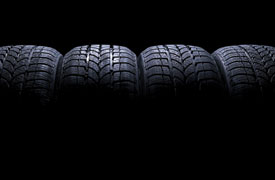WL Plastics
Annually WL Plastics manufactures 500 million pounds of high density polyethylene pipe.

Here you can find our product information.

INEOS Olefins & Polymers USA produces four main product lines:
Our focus in the manufacturing and delivery of these products is on quality, reliability of service and on-time delivery in support of our customers’ winning strategies.
We are one of the largest suppliers of ethylene, butadiene, high density polyethylene and polypropylene to the North American marketplace. Our polymer products are marketed globally both directly as business-to-business sales and through authorized distributors. Our manufactured polyethylene pipe business is one of the largest in the U.S. Pipe products are manufactured in 9 sites across the U.S. to facilitate quick response and speed to market.
| MERCHANT PRODUCTS | INEOS OLEFINS & POLYMERS USA NAMEPLATE CAPACITY (MLBS) |
KEY END USES |
|---|---|---|
| Ethylene | 4600 | Polyethylene, PVC, VAM, ethylene glycol |
| Butadiene | 220 | Synthetic rubber, ABS, nylon |
| High Density PE | 3,535 | Blow molded bottles, injection molding, pipe, packaging |
| Polypropylene | 1,950 | Fiber, film, injection molding, sheet |
| HDPE Pipe | 893 | Potable water, waste water, mining, oil and gas, natural gas, power and communications |
| INTERNAL FEEDSTOCKS | ||
|---|---|---|
| Propylene | 880 | Polypropylene, acrylonitrile, propylene oxide |
 Ethylene is produced by steam cracking feedstocks such as natural gas liquids and refining streams including ethane, propane and light naphtha. Ethylene is a colorless gas with a slightly sweet smell. It transforms from liquid into a gas at very low temperatures and is normally transported as a supercritical fluid through pipelines.
Ethylene is produced by steam cracking feedstocks such as natural gas liquids and refining streams including ethane, propane and light naphtha. Ethylene is a colorless gas with a slightly sweet smell. It transforms from liquid into a gas at very low temperatures and is normally transported as a supercritical fluid through pipelines.
Ethylene is used to make:
These chemicals are then used to manufacture a wide variety of products from plastic wrap to milk bottles to PVC pipe. Ethylene is of fundamental importance to the plastics industry and is a basic building block of organic chemistry.
 Propylene is a highly flammable colorless gas. Propylene is easier to transport than ethylene, as it can be liquefied at much lower pressures and conveyed in its liquid form.
Propylene is a highly flammable colorless gas. Propylene is easier to transport than ethylene, as it can be liquefied at much lower pressures and conveyed in its liquid form.
Our propylene is used internally as a chemical feedstock to make products such as:
Polypropylene and acrylonitrile are used in fiber, fabrics, cars, appliances, packaging and toys.
 1,3-Butadiene is a colorless gas at room temperature and is liquid at a few degrees below water's freezing point. It is typically extracted from the C4 cut of an olefins cracking process but can be made through dehydrogenation of normal butane. 1,3-Butadiene is used mainly to make synthetic rubber.
1,3-Butadiene is a colorless gas at room temperature and is liquid at a few degrees below water's freezing point. It is typically extracted from the C4 cut of an olefins cracking process but can be made through dehydrogenation of normal butane. 1,3-Butadiene is used mainly to make synthetic rubber.
Synthetic rubber is used to make car and truck tires and athletic shoe soles.
Also called butenes, or Raff-, this C4 hydrocarbon stream is comprised mostly of butane components such as isobutylene and 1-butene, and contains some normal- and iso-butane. It can be transported by pipeline, railcar or barge.
Butenes can be:
Raff-1 alkylate feed is used in making gasoline; refined butenes are used in the manufacture of adhesives, plastics and cosmetics.
Crude benzene is one of the heavier products produced by a steam cracking process and is comprised mostly of the chemical component benzene, a colorless, highly flammable liquid with a sweet smell.
Crude benzene is further refined to benzene where it is used in the production of other industrial chemicals such as:
Crude benzene is used as a precursor in the production of pharmaceuticals, plastics, synthetic rubber and dyes.
Hydrogen is a colorless, odorless, tasteless, and flammable gas that forms as a byproduct of steam cracking. Hydrogen is transported by pipeline to customers. The hydrogen produced by steam cracking is in excess of 90% pure, which is suitable for most applications. It can be further purified for use as a fuel or in chemical analysis applications. It is commonly used in refinery processes for hydrogenation or sulfur removal.
Fuel oil is typically the heaviest cut of the steam cracking process. It is a liquid at room temperature and is typically used as a fuel for the generation of heat or in an engine for the generation of power.
 INEOS Olefins & Polymers USA produces 1.9 billion pounds of polypropylene homopolymer, random copolymer and impact copolymer pellets annually, which is shipped via railroad hopper cars and bulk trucks.
INEOS Olefins & Polymers USA produces 1.9 billion pounds of polypropylene homopolymer, random copolymer and impact copolymer pellets annually, which is shipped via railroad hopper cars and bulk trucks.
Our polypropylene is used in the manufacture of:
 Annually, INEOS Olefins & Polymers USA produces 3.2 billion pounds of high-density polyethylene homopolymer and copolymer, primarily in the form of pellets, which is shipped via railroad hopper cars and bulk trucks.
Annually, INEOS Olefins & Polymers USA produces 3.2 billion pounds of high-density polyethylene homopolymer and copolymer, primarily in the form of pellets, which is shipped via railroad hopper cars and bulk trucks.
Our polyethylene is used in the manufacture of:
Our pipe products are used for:
Bisphenol A StatementREACH CoRAP and SVHCs
Angel Hair and StreamersEnvironmental Stress Crack Resistance of PolyethyleneHDPE Silo CapacityHDPE Chemical Resistance GuideHDPE Pipe: PE3608 versus PE4710HDPE Typical PropertiesINEOS Extrusion Guidelines for HDPE Pipe Grade ResinsINEOS Injection Molding Conditions for Pipe ResinsPP Chemical Resistance GuidePP Processing GuidePP Silo CapacityPP Typical PropertiesTips for Injection Molding INEOS HDPE ResinsTips for Injection Molding INEOS Polypropylene Resins
Gamma Radiation Sterilization of PolypropyleneMicrowavability of Polypropylene
INEOS Olefins & Polymers believes that investing in research and design leads to the development of superior products and our patents are an important part of that investment. In accordance with Section 287(a) of Title 35 of the United States Code, you are hereby placed on notice of INEOS O&P USA Company's rights in the United States Patents listed on this site which cover the following resin grades, applications and/or processes, which are exemplary as the associated patents may not be limited thereto.
| Grades | Patents |
|---|---|
| CAP311X2403, CAP311US | US 7776998B2 |
| CAP311X2413, CAP311US1 | US 7776998B2 |
| CAP311US2 | US7776998B2 |
| CAP508X2417, CAP508US | US 7776998B2 |
| CAP508S2X2166, CAP508US1 | US 7776998B2 |
| CAP508X2386, CAP508US2 | US 7776998B2 |
| CAP508US3 | US 7776998B2 |
| CAP602X2174, CAP602CB7 | US 7776998B2 |
| CP53-30 | US 7776998B2 |
| J50-10N5000, J52-08-226 | US 7897710B2, US 9481772B2, US 9873782B2 |
| TUB121B, TUB121N, TUB121GN, TUB121NTW | US 7776998B2, US 9873782B2, US 10787563B2, US 11661501B2 |
| Applications/ Processes | Patents |
|---|---|
| Low gel film and pipe | US 8124708B2, US8445619B2 |
| Bimodal film | US 7897710B2, US 9481772B2, US 9873782B2 |
| Bimodal pipe fittings | US 7714074B2, US 7812095B2 |
| Bimodal pipe | US 7452954B2, US 9873782B2, US 10787563B2, US 11661501B2 |
| System and method for rapid transitioning of polyolefin processes from one product to another | US 8986618B2, US 9273155B2, US 9371404B2 |
| Polymerization process | US 11312150B2 |
| Polymerization process | US 11512150B2 |
| Polymerization process | US 12060443B2 |
| Medium pressure steam intervention in an olefin cracking furnace decoke procedure | US 9644149B2 |